The Gorenc Generals
Immigrants to Generals
By: Jim Fausone
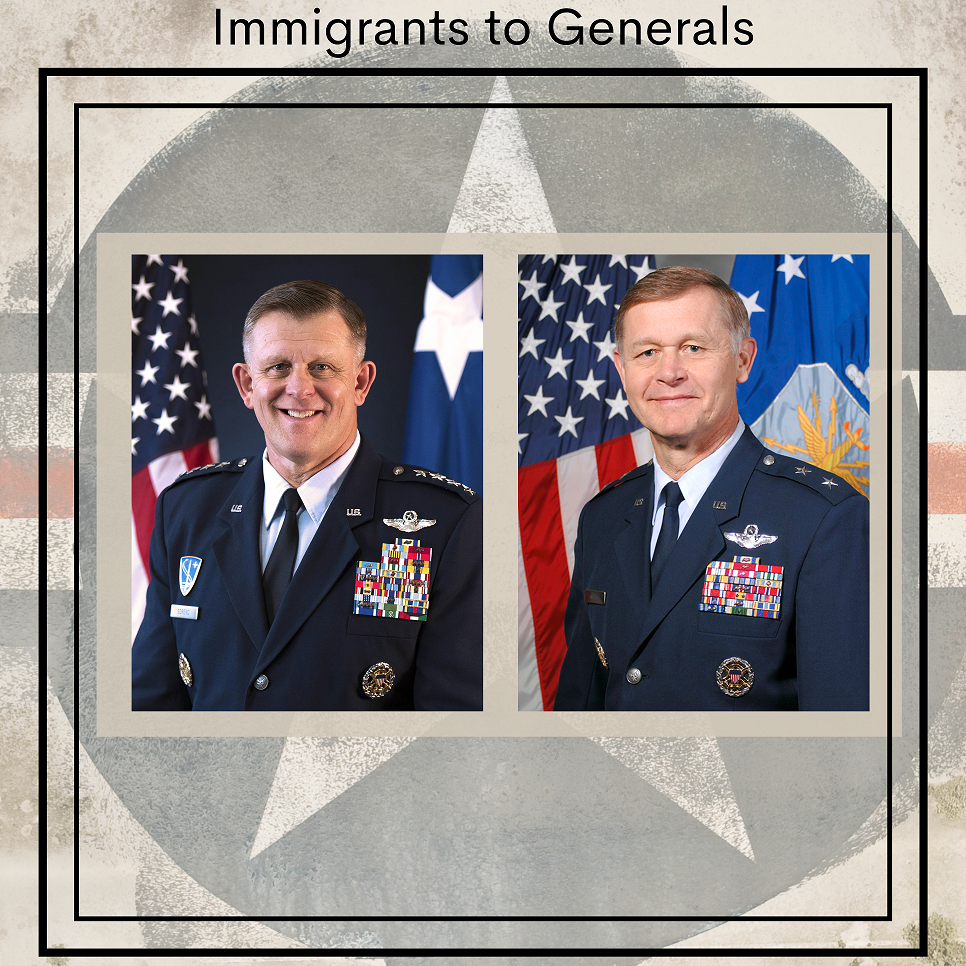
Sometimes military service and love of country are generational, but sometimes it springs up in a single generation. For the Gorenc Generals, successful military careers sprung out of the American dream of immigrants from Yugoslavia, present-day Slovenia.
The Gorenc family emigrated from Slovenia in 1962. Frank was 4-years-old and Stanley was 9 when their parents made the move. The seeds of that decision to adopt a new country must have been planted much earlier. In the late 1950s, Slovenia was the first of the Yugoslav republics to begin a process of becoming relatively more independent. A decade of industrialization in then Yugoslavia was accompanied also by a cultural and literary revolution with many tensions between the regime and dissident intellectuals. By the 1960s, the Slovenian Communist Party was in charge of the government in the region, which seemed to change every decade.
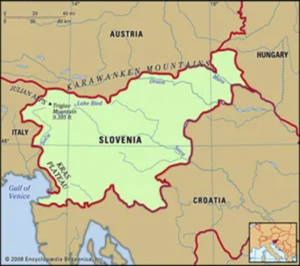
Slovenia historically was a wedge of land bordered by Hungary, Italy, Austria, and Croatia.
It was absorbed into Yugoslavia in 1918 after World War I as the Kingdom of Sers, Croats, and Slovenes. The Kingdom was invaded by the Germans in April 1941. After World War II, it was admitted to the United Nations in November 1945 after the abolition of the monarchy. Communist leader Joseph Tito ruled the country until his death in 1980. Tito's reign as prime minister and then-president for life ran from 1944-1980 and is a controversial period. He managed to keep the ethnic tensions in Yugoslavia in balance. After dancing with a traditional communist approach, he turned to more socialist policies. Historians view Tito as either an authoritarian or a benevolent dictator. He was popular at home and abroad while building himself a powerful cult personality. A stubborn man, he refused treatment for circulation problems in his left leg. He threatened to kill himself if his leg was amputated. In the end, the leg was amputated but too late to save him from death by gangrene in May 1980. The country lasted 50 years before Yugoslavia disintegrated in April 1992. The underlying tensions that Tito held at bay returned upon his death resulting in the breakup of Yugoslavia.
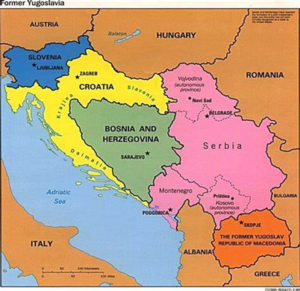
The Family Moves

Stanley (left) and Frank (right) pose for a family portrait. Photo by Staff Sgt. David Salanitri, Air Force Public Affairs Agency
Stanley and Frank were born in Ljubljana, Yugoslavia. The family immigrated with their parents directly to the United States in 1962. Frank related to the Air Force Times that his parents arrived with two suitcases, two boys, and $100 in their pockets.
The parents and boys became citizens of the United States of America in 1973. Their immigration into the country had been sponsored by Representative Clement Zablocki, D-Wisconsin. The family made its home in the Milwaukee, Wisconsin area. The Milwaukee area had many Gorenc relatives and a vibrant immigrant community from central Europe at that time. The family did not initially speak English and the boys would have been at a disadvantage with other school children of their age. Their father worked as a tailor at the Pfister Hotel shop and their mother worked as a Briggs & Stratton machine operator. From very humble beginnings an opportunity arose. Dad dragged the boys to free-air shows in the area, and in particular the F-4 Thunderbirds, that ignited their imagination.
The boys grew up on the south side of Milwaukee near S. 9th and W. Mineral streets and attended Eugene Field Elementary School, Kosciuszko Junior High, and Milwaukee Tech High School. Frank told the Air Force Times, "We're an immigrant family. We weren't well off. Quite honestly, my brother (Stanley) walked into the counselor's office at Boys Tech and said, 'Hey, I want to go to college but we don't have a lot of money. Where can I go?'" A guidance counselor helped with the paperwork and process to head the boys to the Air Force Academy.
One opportunity presented itself when a student teacher told Stanley's class that she was going to marry an Air Force officer after he graduated from the U.S. Air Force Academy. She told the kids that it was a great free education and it became a part of the American dream for the Gorenc boys. When the time came to apply to the Academy, the same Congressman that sponsored the family into the Country nominated each boy to the Academy.
Major General Stanley Gorenc
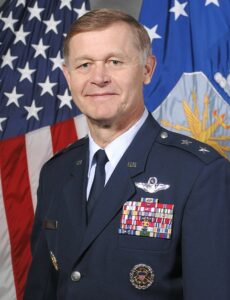
As the oldest brother in an immigrant family, Stanley must have felt enormous pressure to succeed. Getting into the class was difficult, but staying in until graduation was another challenge. The attrition rate was 46%. The class motto was "Class of 75 - Best Alive." Of the men who stayed, 37 achieved the rank of general. Women did not arrive at the Academy until a year later in 1976.
While Stanley was at the Academy the country was in conflict. The draft authority expired in June 1973 and the last lottery was in March 1975. The Vietnam War was ending in April 1975. A few months later, Stanley was graduating with a Bachelor of Science degree in civil engineering in 1975. The outlook for the USAF was cloudy at best. But a young man with a fresh degree and interest in flying is not looking at the clouds, only the available runway.
Stanley's opportunity included commanding a flying training squadron, fighter operations group, and three wings: a training wing responsible for the Euro-NATO Joint Jet Pilot Training Program, a reconnaissance wing responsible for the Air Force's entire high-altitude reconnaissance fleet, and for several months, the 380th Air Expeditionary Wing responsible for conducting combat operations in Southwest Asia. He also commanded United States Air Forces Europe for six months. He accumulated more than 3,250 hours in F-4E, F-15E, F-16, R-37, T-38, U2, and BAe Hawk airframes.
His assignments over more than thirty years of service took him all over the country and the world. He spent time at bases in Germany, England, and Japan. His stateside assignments are too many to mention but with the obligatory stops in Washington, D.C., and finally as Air Force Chief of Safety and Commander, Air Force Safety Center, Kirtland Air Force Base, New Mexico. In those final assignments, he used all of his experiences to develop, execute, and evaluate all Air Force aviation, ground, weapons, space and system mishap prevention, and nuclear surety programs to preserve combat readiness. He was responsible for conducting research to promote safety awareness and mishap prevention; oversaw mishap investigations; evaluates corrective actions; and ensures implementation. Finally, he managed and directed all Air Force safety and operational risk management education courses.
Like many upwardly mobile officers, Stanley focused on additional education. He attended Air Command and Staff College and the Royal Air Forces Staff College. He earned a Master's Degree in Aeronautical Science from Embry-Riddle Aeronautical University in Daytona, Florida, in 1988. He attended the Industrial College of the Armed Forces and the Black Sea Security Program at Harvard University and the Combined Force Air Component Commander Course. His education includes overseas and combined forces training. A diversified set of educational programs beyond an immigrant's dream who expressed his discomfort with test taking and being just an average student.
Of his many awards and citations, Stanley received the Air Force Distinguished Service Medal for actions in the Global War on Terror.
The synopsis of the citation reads: Major General Stanley Gorenc, United States Air Force, was awarded the Air Force Distinguished Service Medal for exceptionally meritorious and distinguished service in a position of great responsibility to the Government of the United States. The singularly distinctive accomplishments of General Gorenc and his dedicated contributions in the service of his country reflect the highest credit upon himself and the United States Air Force.
He also received the Defense Superior Service Medal. That citation reads:
Under the provisions of Department of Defense 1348.33-M, the Secretary of Defense has awarded the Defense Superior Service Medal to Major General Stanley Gorenc, United States Air Force, for exceptionally superior service to the Department of Defense. The distinctive accomplishments of General Gorenc reflect great credit upon himself, the United States Air Force, and the Department of Defense.
Major General Stanley Gorenc retired on July 1, 2007. After retiring, Stanley was recognized by the Carnegie Corporation of New York as a "2008 Great Immigrant." He was a part of that year's group of extraordinary immigrants that have made notable contributions to the progress of American society.
As a distinguished pilot, Stanley has worked for Raytheon Co., one of the world's largest defense contractors. He spoke about the F-35 Joint Strike Fighter, stating: "It is a truly remarkable platform," in his capacity as an international business development manager at Raytheon in 2020. One can only imagine he would have loved to fly that bird.
General Frank Gorenc
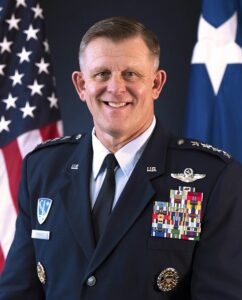
In some regards, Frank's path was first plowed by big brother Stanley, as was his admission to the USAF Academy. Frank had the opportunity to visit Stanley in Colorado Springs, Colorado, and see what academy life looked like. During a Parents' Weekend at the Academy, when everything was in order and polished, Frank developed his first real interest in the Air Force. "As a freshman in high school walking on the academy campus, you couldn't help but be inspired," he has said. He knew the path to gain admission working hard to obtain his appointment and make the most of the opportunity.
In high school, Frank played football and trombone in the school's band and jazz ensemble, graduating in 1975. His family was "lower-middle class" but believed in the American dream of hard work and limitless opportunities.
As Frank explained to the Air Force Times in 2016:
"I'm also grateful, to be perfectly honest, that the congressman who nominated me to go to the Air Force Academy went through a very thorough process, and it wasn't all test based.
Quite honestly, I'm not a good test taker, but I always tell this story about me marching down to my local congressman's office for an hour-long interview at the age of 16. And there's a housewife, a priest and a local businessman for an hour asking me why I wanted to go to the Air Force Academy. That was the fundamental part of his nomination process.
And I'll tell you, based on the SAT test that I took, which I had to take three times just to get 10 points above the min[imum] to get in, I was very grateful for that opportunity. So he used a civil service exam. He gave me ... and my brother an opportunity to come into this great Air Force ... which is a very results-based, performance-based evaluation king of organization. And that's how it happened, simply put. I didn't join for patriotism. I mean, on the rung of the social system, we [my family] were lower-middle class at best. I went there because it was free."
As most people are not good test takers, the story of Gorenc's selection gives hope to the majority of candidates, and immigrants in particular, that the nomination process for them is possible.
Frank arrived at the academy at a historic time. In June 1976, a group of 157 pioneering women joined Cadet Wing. Thanks to then-Academy Superintendent Lt. Gen. James R. Allen and his relentlessly optimistic leadership, the incorporation, and the transition was relatively smooth. Ninety-seven of the original female cadets completed the program and graduated on May 28, 1980. There was no doubt that Frank would stick it out at the academy as did his older brother. Frank was the Distinguished Graduate of 1979 and obtained a B.S. in Civil Engineering.
Like any young officer, he had numerous assignments as his career progressed. He focused on flying and leadership skills. He accumulated more than 4,800 flight hours.
He commanded a fighter squadron, an operations group, a wing, an expeditionary wing, the Air Force District Washington, and a component Numbered Air Force. Frank served in numerous positions at Air Combat Command, the Air Staff, the Joint Staff, and at U.S. European Command/Supreme Headquarters Allied Powers Europe. general Gorenc was the Assistant Vice Chief of Staff and Director, Air Staff, at Headquarters U.S. Air Force, Washington, D.C.
He checked off all the boxes for promotion. It is with some irony that an immigrant from Slovakia was to find himself protecting NATO and Europe.
He was responsible for Air Force activities, conducted through the 3rd Air Force, in an area of operations covering more than 19 million square miles. This area includes 104 countries in Europe, Africa, Asia, the Middle East, and the Arctic, Atlantic, and Indian Oceans, and possesses more than a quarter of the world's population and generates more than a quarter of the world's gross domestic product.
While approximately 9% of the armed forces are foreign-born, it is only 4% in the Air Force. The odds were against him but Frank found himself overseeing European activity in 2002 and special assistant to the U.S. European Command in Belgium. After a stateside assignment, and being awarded his first star in 2005, the Brigadier General became commander of the 332nd Air Expeditionary wing based in Balad Air Base, Iraq. He returned to Ramstein, Germany as commander of the 3rd Air Force from 2009-2012.
After another Pentagon assignment he was awarded his fourth star becoming a "General" and spent August 2013- August 2016 as commander, of U.S. Air Forces in Europe; Commander, of U.S. Air Forces in Africa; Commander, of Air Component Command, headquartered at Ramstein Air Base, Germany; and Director, Joint Air Power Competency Centre, Kalkar, Germany. This decade-plus was a time of high operational tempo for the U.S. Air Force with anti-terrorism action in the middle east including Iraq, Afghanistan, and Syria.
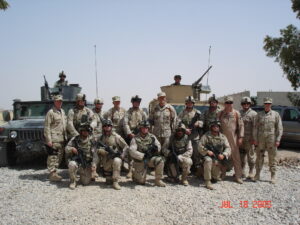
Could anyone ever dream that a young boy from Ljubljana, Slovenia would grow up to have command over the mightiest air power in the world protecting Europe and Africa? The General received various service awards and recognition including the Distinguished Service Medal, Defense Superior Service Medal, Legion of Merit, Airman's Medal, Aerial Achievement Medal, and Joint Service Commendation Medal. He must be particularly proud of receiving the NATO Medal for Former Yugoslavia. When he retired in 2016, Frank Gorenc used his expertise to work in the defense consulting industry including time with GE Aviation.
The Gorenc brothers clearly ascended to the top of the U.S. Air Force and proved the loyalty and competence of immigrants to this country.
About the Author
Jim Fausone is a partner with Legal Help For Veterans, PLLC, with over twenty years of experience helping veterans apply for service-connected disability benefits and starting their claims, appealing VA decisions, and filing claims for an increased disability rating so veterans can receive a higher level of benefits.
If you were denied service connection or benefits for any service-connected disease, our firm can help. We can also put you and your family in touch with other critical resources to ensure you receive the treatment you deserve.
Give us a call at (800) 693-4800 or visit us online at www.LegalHelpForVeterans.com.
This electronic book is available for free download and printing from www.homeofheroes.com. You may print and distribute in quantity for all non-profit, and educational purposes.
Copyright © 2018 by Legal Help for Veterans, PLLC
ALL RIGHTS RESERVED



